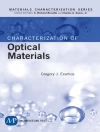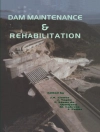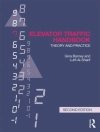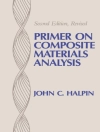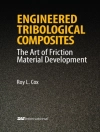Linear systems have all the necessary elements (modeling, identification, analysis and control), from an educational point of view, to help us understand the discipline of automation and apply it efficiently. This book is progressive and organized in such a way that different levels of readership are possible. It is addressed both to beginners and those with a good understanding of automation wishing to enhance their knowledge on the subject. The theory is rigorously developed and illustrated by numerous examples which can be reproduced with the help of appropriate computation software. 60 exercises and their solutions are included to enable the readers to test and enhance their knowledge.
Mục lục
Preface xi
Introduction xvii
Chapter 1. Reminders and General Points 1
1.1. Lines 1
1.2. Adaptation and stationary waves 4
1.3. Smith chart 6
1.4. Power in a line 6
1.5. Line sections 7
1.6. Lines with losses 9
Chapter 2. Measurements in HF 11
2.1. Material 11
2.2. The power bench11
2.3. Measurements on the network analyzer 14
Chapter 3. Resonant Cavities 25
3.1. Resonance 25
3.2. Coaxial cavities 28
3.3. Quarter-wave cavities 29
Chapter 4. Fabrication and Tuning of Cavities 47
4.1. Standard structures 47
4.2. Materials 53
4.3. Assembly 56
4.4. Temperature stability 58
4.5. Cavity tuning 70
Chapter 5. The Band-pass Filter 83
5.1. The band-pass function 83
5.2. Calculation of a Tchebycheff band-pass 85
5.3. Technologies 87
Chapter 6. The Combline Filter 97
6.1. Architecture 97
6.2. Dimension calculations. Dishal’s Method 105
6.3. Tuning of filters 114
Chapter 7. Channel Multiplexing 129
7.1. Definitions 129
7.2. The duplexer 129
7.3. The combiner 140
Chapter 8. Auxiliary Devices 157
8.1. Introduction 157
8.2. Circulators 157
8.3. The antenna alarms 165
8.4. Loads and attenuators 170
8.5. Reception amplifiers 177
8.6. The impedance adaptor 186
8.7. The 2nd harmonic rejecter 186
Chapter 9. Directive Couplers 189
9.1. Introduction 189
9.2. Technologies 191
9.3. The hybrid transformer 194
9.4. The 180° hybrid ring 196
9.5. The wireline 198
9.6. The ‘groundless’ coupler 199
9.7. The ‘catnose’ coupler 201
9.8. Discrete-elements coupler 202
9.9. Numerical data 204
9.10. Applications 210
Chapter 10. Helical Resonators 213
10.1. Introduction 213
10.2. Functioning 214
10.3. Structures 215
10.4. Tapping and coupling 219
10.5. Quality coefficient 220
10.6. Set-up rules 223
10.7. Applications 224
Chapter 11. Multicouplers 225
11.1. Transmitter multicouplers (TX) 225
11.2. Receiver multicouplers (RX) 235
11.3. TX/RX multicouplers 236
11.4. TMA 240
11.5. Power and intermodulations 243
11.6. Multiband coupling 254
Chapter 12. Utilities 257
12.1. BASIC programs 257
12.2. Varia 264
Chapter 13. Various Questions and Exploratory Ways
271
13.1. The coupler without intrinsic loss 271
13.2. Infinite rejection band-pass 275
13.3. Helix TX multicoupler 276
13.4. Conclusion 278
Bibliography 281
Index 283
Giới thiệu về tác giả
Henri Bourlès, CNAM, France.


